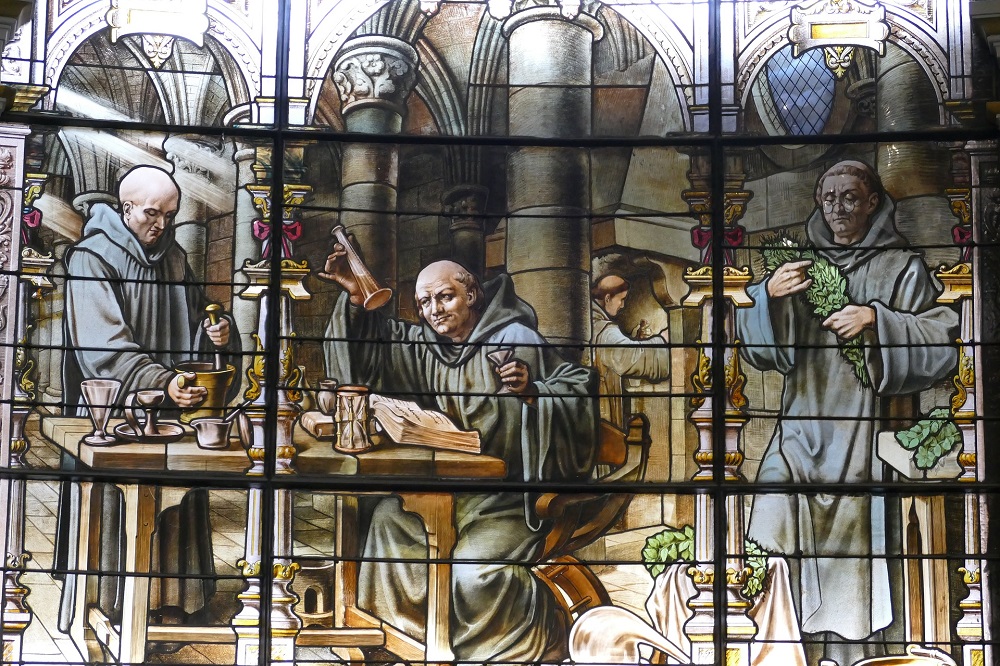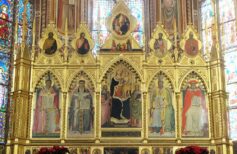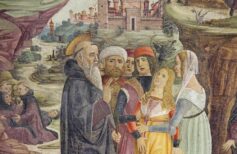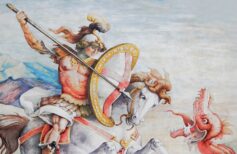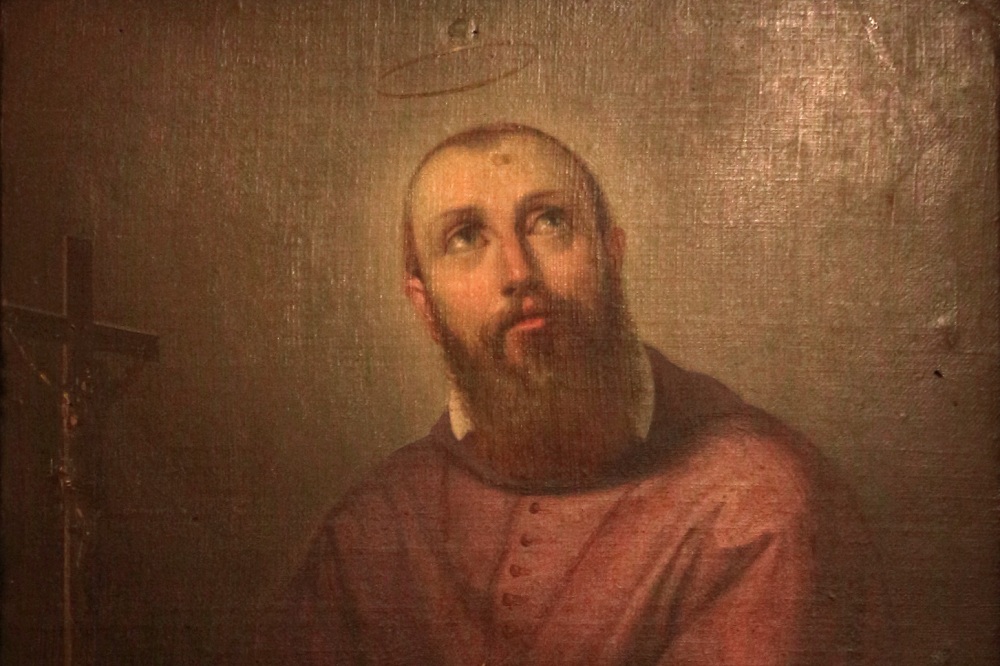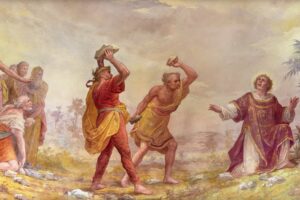The devotion to San Biagio di Sebaste, doctor and patron of otolaryngologists, who treats throat diseases. The holy helpers. When and who to call when you are sick.
Contents
San Biagio has always been the object of a particular cult by its faithful. In addition to being an excellent bishop and martyr, to whom many miracles and wonders have been attributed, he is remembered in his capacity as a doctor, and in particular, as a saint to be invoked in the case of throat diseases. This is the reason why he is considered among other things the patron saint of otolaryngologists, doctors who treat diseases of the ear, nose and throat.
It has always been a common custom, since the origins of the cults of saints, to attribute to one or the other of them the ability to protect from particular ailments, or even to heal from diseases.
This popular devotional form was widespread especially in the Middle Ages, and from the thirteenth century, a form of cumulative devotion to the so-called Holy Helpers or Helpers developed in Germany. It is a group of fourteen Saints who were associated with the remedies for a series of various diseases and health problems, from headache to fever, from epilepsy to plague, from toothache to leprosy. In the 15th century, Pope Nicholas V established 8 August as a collective feast for these 14 saints, whose cult was however suppressed in 1969 by Pope Paul VI.
The fourteen holy rescuers or helpers are: Acazio (migraine, agony), Barbara (fever, lightning, sudden death), Biagio (sore throat), Cristoforo (plague, hurricanes, travel accidents), Ciriaco (temptation, possession of the devil), Dionysius (headache, syphilis), Egidio (sterility, panic, night fears, epilepsy, madness, rashes), Erasmus (abdominal and intestinal pain, childbirth risks), Giorgio (plague, leprosy, skin diseases), Eustachio (burns, eternal fire), Catherine of Alexandria (diseases of the tongue and language), Margherita of Antioch (risks of childbirth), Pantaleone (consumption), Vito (mental illnesses, lethargy, chorea, epilepsy, hydrophobia).

November 25th, Saint Catherine of Alexandria
Who does not know the story of Adam and Eve, the first man and the first woman? But are we really sure that we know it properly…
Who is San Biagio
San Biagio lived in Armenia between the 3rd and 4th centuries. He was probably born in the city of Sebaste, or modern-day Sebastea in Turkey, where he became bishop. He also practised as a doctor. Not much is known about him, a few often conflicting stories handed down by word of mouth and in ancient hagiographies. He suffered martyrdom for his faith and died beheaded after being tortured for a long time with the iron combs used for carding wool. Many legends have been handed down about him, such as that when to escape the persecution, he took refuge in the mountains, the animals of the forest went to visit him, sweet and tame, so much so that even a wolf, who had kidnapped a poor woman’s pig, returned, by order of the saint.
His cult is celebrated on 3 February, the presumed day of his death. Although his remains, embarked to be brought to Rome, ended up due to a storm on the coast of Maratea, where they were collected and kept in a chapel in the Basilica of Maratea, on Mount San Biagio, many churches throughout the Mediterranean basin exhibited fragments of his body as relics. This contributed to the spread of the cult of this saint, to whom extraordinary healing powers were attributed even after his death.
Among the various statues depicting the saint, we remember the silver statue kept in the Basilica of Maratea. It is a faithful replica of a stolen eighteenth-century original.
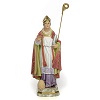
Among the various miracles attributed to him, we remember the rescue of a child who risked suffocating after ingesting a fishbone. San Biagio would also have defended with his own hands the Basilica of Maratea, where his remains lie, stopping a cannonball fired by the French during the siege of December 1806 with his fingers, as shown by the prints still present on the aforementioned ball.
In Fiuggi in 1298, he would have caused miraculous flames to spring up to discourage the papal troops who wanted to besiege the city. For this he was elected patron and still today, in his honour, on the evening of February 2 large piles of wood, the stuzze, are burned in the square.
San Biagio is also co-patron of Salemi, near Trapani. In 1542, the region was devastated by an invasion of locusts, which destroyed the crops, condemning everyone to famine. The prayers to San Biagio freed the peasants from this calamity, and since then, on the occasion of the saint’s feast, miniature loaves have been prepared, called “cavadduzzi”, i.e. grasshoppers and “cuddureddi”, made in the shape of a throat. Then the faithful flock to the church dedicated to the saint, and in front of the statue of San Biagio they bless the “cuddureddi” and “cavadduzzi”. Even those suffering from throat problems are blessed by the priest with two lighted and crossed candles. In recent years, there is also a great historical reenactment that commemorates the miracle of the locusts.
In the monastery dedicated to San Biagio in Durres, Albania, it is said that even in the twentieth century a rock began to ooze an oil with incredible healing effects. Thousands of witnesses would have witnessed the miracle and even today the place is a destination for pilgrimages.
Because he is considered the patron saint of the throat.
Among the many stories about him, it is also said that not only Saint Biagio saved lives with his medical art, but also with prayer, in the name of God, and that he had saved many people who risked dying from suffocating by bones or thorns stuck in the throat, with his miraculous touch.
On the Libri Medicinales by Ezio di Amida, a Greek writer of medicine who lived in the first half of the sixth century in Mesopotamia, we read, concerning the treatment of sore throat:
“If the thorn or the bone does not want to go out, turn to the sick person and tell him” Come out, bone, if you are bone, or whatever you are: come out like Lazarus at the voice of Christ came out of the tomb, and Jonah from the belly of the whale.” In other words, having made the sign of the cross on the sick person, you can utter the words that Biagio martyr and servant of Christ used to say in similar cases “Either ascend or descend”.
Prayer to San Biagio for the throat
Even today San Biagio is considered the protector of those suffering from more or less serious ailments in the throat, so much so that a prayer dedicated to him has been written, concerning the miracle of the fishbone:
O Glorious San Biagio, who, with a short prayer, restores perfect health to a child who was about to send his last breath due to a herringbone crossed in the throat, obtain for us all the grace to experience the effectiveness of your patronage, in all sore throats, but most of all, to mortify with the practical faith of the precepts of the Holy Church, this very dangerous sense, and to always use our language to defend the truths of the faith so much fought and denigrated today. So be it…
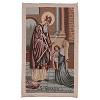
Products of the monasteries
In addition to prayers and devotion to San Biagio, a good remedy for sore throats and seasonal ailments can be constituted by the products of the monasteries, in particular propolis sprays, candies and products from the hive.
In particular, the propolis spray throat of the Benedictine Herbalist is a precious ally to face the cold season. It is a powerful antiseptic, which on the one hand prevents the multiplication of germs, bacteria and viruses, on the other hand, it kills bacteria and strengthens the immune system.

This resin that bees have always used to reinforce, seal and disinfect the hive, has miraculous virtues also to face the change of season and the rigours of winter with the inner track. Since ancient times, among the civilizations of the Egyptians, Greeks and Romans, this substance was used as a component for perfumes and as a medicine, to extract thorns and quills, reduce swelling, soothe joint pains, and in particular as a remedy against cough.
Many of the candies and sweets produced in monasteries or made according to ancient recipes exclusive to the monks, also have remarkable balsamic properties, as well as being delicious. Some also have antibacterial action, such as propolis candies produced according to the recipe of the monks of the Abbey of Finale Ligure.
Beehive products: beneficial properties of honey and other products
In general, all products derived from bees are excellent remedies for sore throats, coughs, and help to face the winter by fortifying the immune system.
We are talking about various types of honey, wildflower, acacia, lime, eucalyptus, orange, but also royal jelly, pollen, propolis, all produced with natural methods by Italian monasteries.

We have already written about propolis, praising its antiseptic function.
Honey is an excellent natural antibiotic, as well as being a very energetic source of simple sugars.
Pollen strengthens and nourishes the whole organism, thanks to the precious nutritional elements of which it is composed, it is an irreplaceable adaptogen and antioxidant and supports in states of physical and mental fatigue.
Finally, royal jelly strengthens the body allowing it to better deal with seasonal changes and periods of stress.

